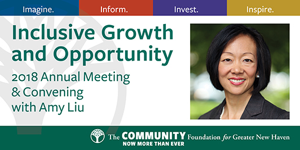“I know people aren’t coming here to get an ice cream cone,” Shelley Sherbondy says from her fourth-floor office on Long Wharf Drive. Anatomy posters hang on the walls. A Cabbage Patch doll fitted out with crutches—a gift from a patient—is perched on a display shelf. “They’re coming here to get something their doctor thinks they need, but which they probably don’t want.”
Sherbondy is a CPO, certified in prosthetics and orthotics, the person you go to for a back brace or a prosthetic limb. She’s been in the business for 23 years and says she’s the longest-practicing female CPO in Connecticut. She’s spent the last eight at Biometrics, a company founded in 1993 with five locations across the state.
sponsored by
“Everyone’s interested in the prosthetics,” she says. “That’s the whizz-bang.” Mechanical limbs are evocative of cyborgs and cutting-edge technology, and Sherbondy says the knowledge and practice in the field has exploded in recent years. Computer designed knee-joints and lightweight materials are a far cry from the early days when prosthetic pioneer J.E. Hanger fashioned a limb for himself out of barrel staves after losing a leg in the Civil War.
But the day-to-day life of a CPO is spent focused on that less glamorous but more common necessity: the orthotic, or the brace. If prosthetics summon images of Luke Skywalker, orthotics tend to bring another character to mind: “They come here to see the brace lady and they say, ‘You’re not going to give me the Forrest Gump brace, are you?’” Sherbondy says. “That’s what their connection is to orthotics.”
While the training to become a CPO is more rigorous than it used to be, there haven’t been as many flashy advances when it comes to the actual products. Leather and wood have been swapped for “carbon, graphite and plastic,” but even so, clients tend to be unenthusiastic at first. “I use the analogy of glasses,” says Sherbondy, pointing at her own frames. “I hate my glasses. But I have to have them to be able to do what I want to do.” At the first appointment, there’s often a lot of pushback, but by the time the patients come back for a checkup, many have become converts. Patients find themselves able to walk, play with their children and feel safe in their own bodies again, Sherbondy says. “No one wants to wear this. My job is getting people to feel okay with it.”
Although she does work with adult clients, Sherbondy specializes in pediatric orthotics, and she takes me back to see some of the braces she’s put together for her smaller patients. There are full torso braces to prevent the development of scoliosis and small helmets fitted for babies born with flat skulls. Sherbondy is especially grateful for the new laser technology she now uses to map babies’ heads for these helmets, and recalls her early days in the field where she had to “cover the baby’s head in plaster. It would drip into their eyes—they were crying, their mom was crying, I was crying… So yes, there definitely have been advances in orthotics as well.”
Her work station looks more like a mechanic’s than a doctor’s. Heat guns, scrapers, electric wires and a massive sanding drill all stand at the ready to make adjustments. She shows me how to heat a plastic brace until it’s soft enough to mold with your hands.
In the next room, there are two more intricate braces. They’re HKAs—orthotics that fit from the hip, to the knee, to the ankle—molded from opaque white plastic. Metal fittings slide at the knees and hips to help the wearer sit and stand easily, and velcro straps are attached to fit it to the body. It’s a strange and moving thing to examine—an exoskeleton for a human being. One of the braces is smaller than the other, but Sherbondy says they’re actually for the same child, just at different stages of development. “That’s the fun part,” she says of pediatric orthotics. “You see them as a four-year-old and then they’re going to college.”
Sherbondy says parents often become emotional at the thought of their child wearing such a thing, but she knows it can make an enormous difference in a child’s life. “I meet a patient, and I think: Can we get her out of her wheelchair, and have her be able to stand with her peers at school and not always have to look up at them?”
That’s the part of the job that Sherbondy says she “gravitates towards…We all get into this field for different reasons. It’s an obscure profession. You don’t go to the family reunion and have six or seven orthotist prothodists there… You don’t hear about this from your guidance counselor.” Sherbondy starts moving one of the HKAs, letting the little feet slide over the floor like a child walking.
“People always say to me, ‘Isn’t it sad what you do?’” she says. “I see children who had very difficult diagnoses. I guess it could be sad. But I just think: What can I do to give them better quality of life?”
Biometrics
1 Long Wharf Dr, Ste 400, New Haven (map)
Mon-Fri 8:30am-5pm (by appointment)
(203) 562-0123
www.biometricsct.com
Written and photographed by Sorrel Westbrook.









